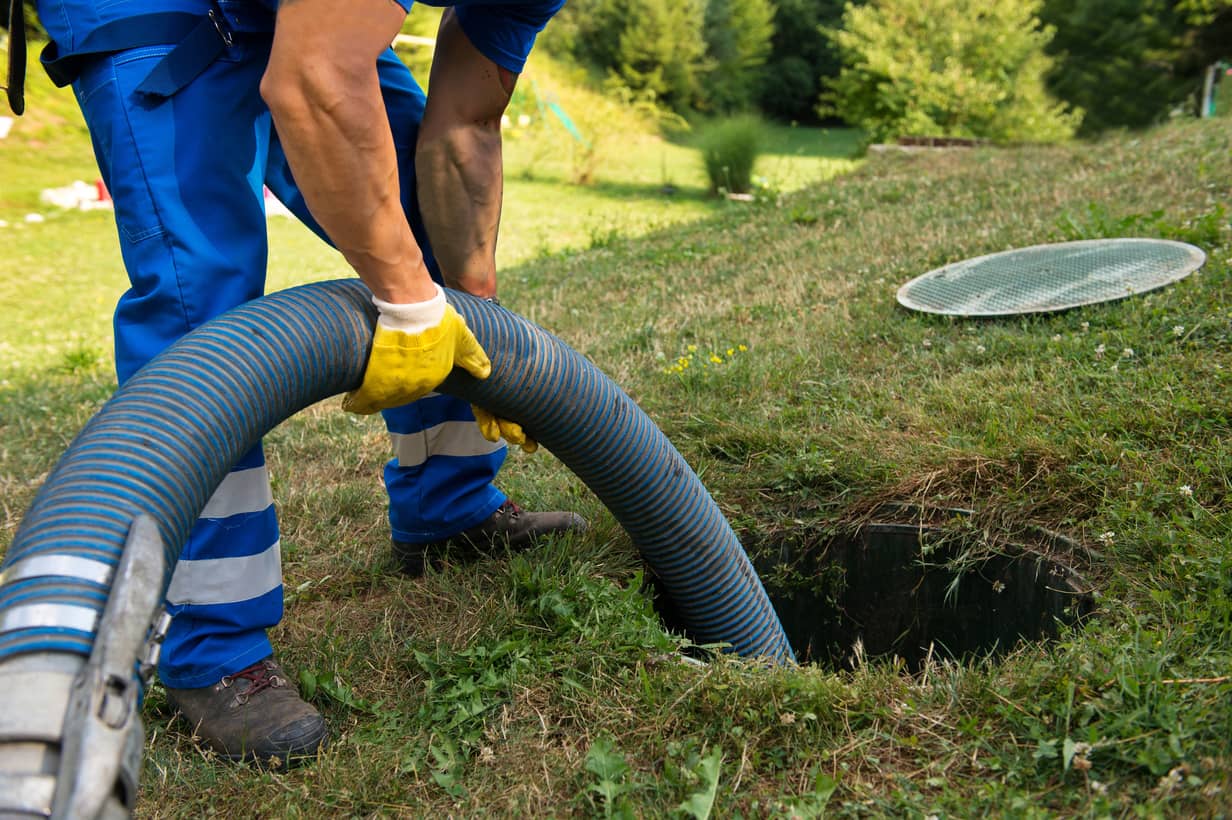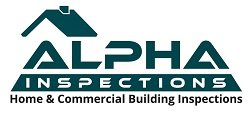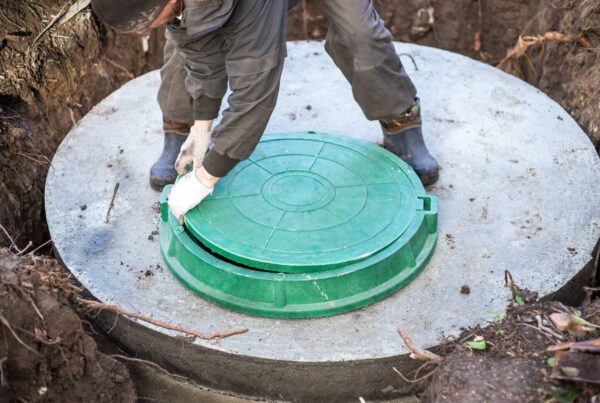
Clogged drains are a familiar adversary for homeowners, seeming to strike at the most inconvenient times. Asenals of products line store shelves, promising swift victory over stubborn blockages. Among the arsenal, Drano stands out as a household name synonymous with quick, effective relief. However, those with septic systems face a common question – is Drano septic safe?
Septic systems are not just mechanical entities but delicate ecosystems, and what we pour down our drains can have far-reaching effects on their health and functionality. Today, we’ll break down the facts, dive into the reality of using Drano for a septic system, and offer guidance for maintaining a healthy septic system overall.
Septic System Basics
Essentially, a septic system is a self-contained, underground wastewater treatment structure, commonly found in rural areas lacking centralized sewer systems. It treats and disposes of household wastewater on-site.
At the heart of the system lies the septic tank, a watertight container buried in the ground. Here, solids settle to the bottom, forming sludge, while oil and grease float to the top as scum. The middle layer of relatively clear water, known as effluent, exits the tank into the drain field. This is a network of perforated pipes laid in gravel-filled trenches. The drain field allows the effluent to percolate into the soil for natural filtration to remove bacteria, viruses, and nutrients.
Crucially, the breakdown of solid waste is orchestrated by a thriving colony of bacteria within the tank. These play a pivotal role. They digest organic material, reducing the volume of sludge and scum, and are the unsung heroes maintaining the system’s equilibrium.
Disrupting this microbial balance can compromise the system’s efficiency. A healthy septic system silently operates in the background. Conversely, when the delicate balance is upset, the consequences can be anything but silent. From slow drainage to backups or even environmental contamination, the stakes are high, and the need for septic-safe practices becomes paramount.

What is Drano?
Drano is a chemical drain cleaner. This is a type of product designed to unblock sewer pipes and dissolve household waste that can lead to clogs.
Its primary ingredient is sodium hydroxide, commonly known as lye. Lye is a powerful substance that breaks down organic material like hair, soap scum, and food remnants. The formula often includes other chemicals that react with the lye, producing heat to help dislodge blockages.
The product line includes various formulations, from gels to foaming solutions, each tailored for different types of clogs and plumbing fixtures. Drano’s promise to consumers is clear: a fast-acting solution that restores flow without the need for manual plumbing intervention. It’s this convenience that has cemented Drano as a staple under sinks and in utility closets across the country.
Potential Risks and Alternatives
While Drano can be effective in clearing clogs, it introduces a potent chemical cocktail to your plumbing. This means Drano can be, but is not always septic safe. The balance of bacteria here is essential for breaking down septic waste.
Drano’s harsh chemicals can kill these beneficial bacteria, potentially leading to a slowdown or halt in the decomposition process. This disruption may result in a buildup of solid waste. From there, this can diminish the system’s ability to function and possibly lead to expensive repairs or full system replacement.
Furthermore, the chemical reaction that makes Drano effective can also generate heat, which may damage PVC pipes and older, fragile plumbing, leading to leaks and other structural issues. The risks extend beyond the immediate plumbing to the broader environment, where these chemicals can leach into the soil, adversely affecting groundwater quality and surrounding ecosystems.
Recognizing these potential impacts, it’s wise to consider alternatives. With minor clogs, boiling water or a mixture of baking soda and vinegar can sometimes provide a simple, non-toxic solution. For tougher blockages, a plunger or a plumber’s snake can be effective without posing a risk to your septic system.
For regular upkeep, introducing septic-safe additives other than Drano can help maintain the bacterial balance, ensuring efficient breakdown of waste. High-fiber waste, such as vegetable scraps and coffee grounds, should be thrown in compost or trash to prevent clogs.

Other Recommended Maintenance
Regular inspection and pumping stand as the cornerstone of septic maintenance, typically recommended every three to five years, depending on usage and household size. These routine checks can help catch issues before they escalate into costly repairs.
Additionally, mindfulness about water usage also plays a critical role in maintaining septic system health. Overwhelming the system with excessive water can disrupt the delicate processing balance, leading to potential backups. Fixing leaks, using water-efficient fixtures, and spacing out water-intensive activities can alleviate strain on the system.
The types of materials flushed or washed down drains significantly influence septic system well-being. Non-biodegradable items, harsh chemicals, and medications can wreak havoc on the microbial ecosystem within the tank. It’s vital to keep anything other than human waste and toilet paper out of the toilets and to dispose of other waste properly.
Landscaping is another aspect that demands attention. The area over the drain field should be kept clear of deep-rooting plants or heavy structures that could damage the underground piping. Vegetation over the drain field should be limited to grass or shallow-rooted plants to prevent root intrusion and ensure unimpeded evaporation and air exchange.
When to Call a Professional
If you encounter persistent slow drains despite regular care, it could signal a deeper issue. Similarly, any signs of sewage backup in the home are an immediate red flag. This is a health risk as well as a system failure indicator, and it warrants urgent professional intervention.
Unpleasant odors around the tank or drain field area are also a telltale sign that something is amiss. These can be symptomatic of an overfull tank, breaches in the system, or problems with ventilation.
Moreover, soggy ground or standing water near the septic tank, particularly if it’s not related to recent rain, can suggest a leak or overflow that needs a professional diagnosis and remedy.
Professional septic service providers can also assist with more complex maintenance tasks that are not DIY-friendly, such as tree root removal in the drain field or repairs to tank components like baffles or tees.
In the case of high-efficiency septic systems that have mechanical parts, pumps, or advanced treatment systems, a certified technician should perform regular service checks according to the manufacturer’s recommendations.
Final Thoughts
In summary, while Drano and similar chemical cleaners offer a quick fix for clogged pipes, they may not be safe for homes with septic systems. The potential risks these chemicals pose to the vital bacterial balance within your septic tank, along with the possible damage to plumbing and the environment, make it prudent to seek alternative solutions for clog resolution and system maintenance.
Instead, adopting regular, septic-safe practices—such as using mechanical tools for clogs, being cautious with what goes down your drains, and scheduling routine professional inspections—can help ensure the longevity and efficiency of your septic system. Alternatively, for a closer look at any septic issues or the whole home, reach out to Alpha Building Inspections today in New Hampshire, Massachusetts, & Maine.



